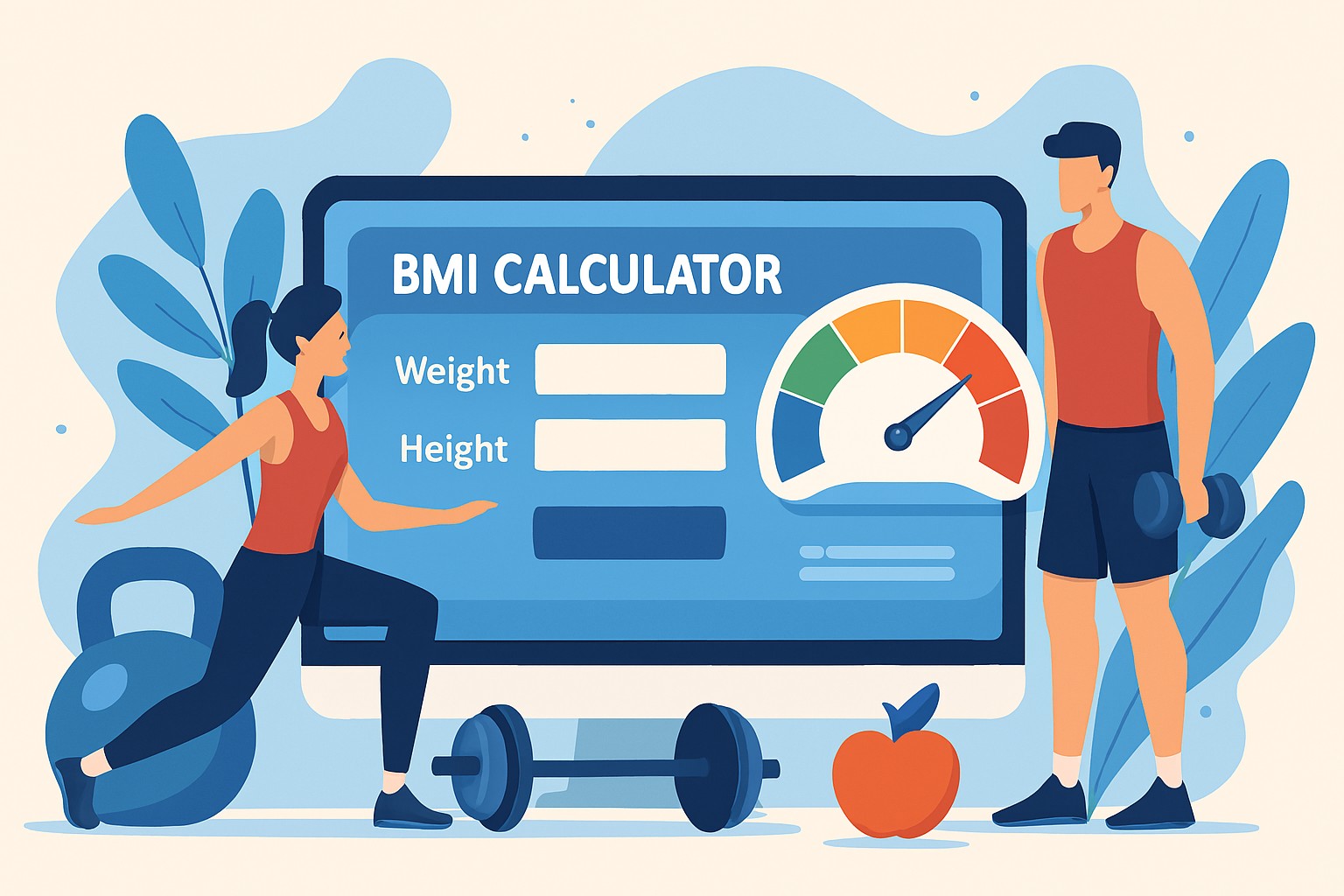Optimizing Your Training with a Workout-to-Rest Ratio Calculator
When it comes to achieving your fitness goals, the way you structure your workouts plays a pivotal role in determining your success. No matter if you are a beginner or a seasoned athlete, finding the right balance between intense work and recovery is crucial for maximizing performance, improving endurance, and preventing injury. One of the most effective ways to structure your workouts is through the use of a workout-to-rest ratio—and an essential tool to help you perfect this balance is the workout-to-rest ratio calculator.
This powerful calculator allows you to determine the ideal amount of rest in relation to your workout intensity, ensuring that your body gets the recovery it needs while optimizing your workout efficiency. Whether you’re training for a marathon, lifting weights, or engaging in high-intensity interval training (HIIT), the workout-to-rest ratio calculator can take your training to the next level. In this article, we’ll dive deep into what a workout-to-rest ratio is, how the calculator works, and how to use it to boost your performance.
Workout-to-Rest Ratio Calculator
What is a Workout-to-Rest Ratio?
The workout-to-rest ratio refers to the balance between the work you put in during your exercise (the “work” phase) and the recovery time you take in between bouts of high-intensity activity (the “rest” phase). This ratio is fundamental for achieving various fitness goals, whether it’s building endurance, improving strength, or increasing speed. Simply put, it helps you structure your workouts to make the most out of your training sessions.
In interval training, for example, you push yourself to perform high-intensity exercises (work phase) followed by a rest or recovery period. The key is finding the optimal balance between these two components, as it ensures you exert yourself just enough to challenge your body without overtraining or burning out.
In different sports or training regimens, the workout-to-rest ratio varies. For example, sprinters may work at maximum intensity for a short time with longer recovery, whereas marathoners or cyclists might have a more balanced approach with shorter work and rest periods. The workout-to-rest ratio calculator allows you to customize these intervals to suit your specific goals, whether you are training for an endurance event, weight loss, or strength building.
How is a Workout-to-Rest Ratio Calculated?
Calculating the ideal workout-to-rest ratio involves understanding both the intensity of your workout and the level of recovery your body needs to perform at its best. A workout-to-rest ratio calculator uses a combination of factors to calculate the most efficient rest periods based on your fitness level, training goals, and type of workout. Here’s how it works:
The workout-to-rest ratio is usually defined as the number of seconds, minutes, or rounds spent on the work phase versus the number of seconds, minutes, or rounds spent resting. For example, a common ratio in high-intensity interval training (HIIT) might be 1:2—one minute of intense exercise followed by two minutes of rest. This ratio can also vary depending on your goal.
Work Phase: During the work phase, you engage in high-intensity exercises that challenge your body, whether it’s sprinting, weightlifting, or doing burpees. The work phase can last anywhere from a few seconds to several minutes, depending on your fitness goals and the type of training you’re doing.
Rest Phase: The rest phase follows the work phase and is just as important. Adequate recovery helps to reduce fatigue, prevent injury, and restore energy for the next work interval. The length of the rest phase is just as important as the work phase, ensuring that your body gets enough recovery before you push it again.
Adjusting for Different Goals
The workout-to-rest ratio can vary significantly depending on the fitness goals you’re aiming for. The calculator adjusts your work-to-rest intervals based on the following factors:
Endurance Goals: If your goal is to build endurance, your work-to-rest ratio may involve longer work periods with shorter rest periods. For example, you may work for two to four minutes at a moderate pace, followed by 30 seconds of rest. This type of ratio enhances your cardiovascular endurance and stamina.
Strength Goals: For strength training, you typically have shorter work intervals (such as heavy lifting or bodyweight exercises) with longer rest periods. A common strength-building ratio might be 1:3 or 1:4 (one minute of work, three to four minutes of rest). This allows your muscles enough recovery to perform at maximum capacity during each set.
Speed and Power Goals: Athletes working on speed or power will typically perform short bursts of intense activity (like sprinting or powerlifting) with longer recovery periods. A ratio like 1:5 or 1:6 would allow for near-complete recovery between sprints, maximizing power output.
Fat Loss and HIIT: If you’re focusing on fat loss and using HIIT (High-Intensity Interval Training), the work-to-rest ratio might involve shorter work periods (about 20-30 seconds) with short rest periods (10-15 seconds). This type of interval training helps to maximize calorie burn and boost metabolism, making it an excellent strategy for fat loss.
The key to an effective workout-to-rest ratio is personalization. A workout-to-rest ratio calculator takes into account your individual needs and fitness goals to generate the ideal rest periods for you. For example, a beginner may need longer rest periods to fully recover between intervals, whereas a more experienced athlete can handle shorter rest periods to push their endurance and performance further.
The formula the calculator uses will also factor in your past performance, current fitness level, and even how much rest you’ve had leading up to the workout. This ensures that your ratio is specifically suited to your individual needs and abilities. It may even adjust in real-time if you’re using an advanced version of the calculator, especially for activities like running or cycling.
Why is a Workout-to-Rest Ratio Important?
Understanding and calculating the correct workout-to-rest ratio can be a game-changer in optimizing your training and performance. Here’s why this ratio is so essential:
The workout-to-rest ratio is important because it allows you to tailor your workout to achieve peak performance. By calculating the right amount of rest for your level of intensity, you can avoid exhaustion or overtraining, ensuring that you’re performing at your best during each work phase.
Whether you’re sprinting or lifting weights, getting the balance right between work and rest allows you to perform high-intensity efforts with maximum effort while also ensuring that you’re recovering adequately to avoid burnout.
Training without proper rest increases your chances of injury. Overworking muscles without giving them time to recover can lead to muscle strains, joint issues, and fatigue. The workout-to-rest ratio prevents this by ensuring your body gets adequate rest, which minimizes the risk of injuries.
Incorporating enough rest into your workout allows your muscles to recover properly, ensuring that they have the energy needed to power through the next set, run, or lap without compromising form.
As you progress through your training, the workout-to-rest ratio calculator is a great tool for tracking improvements. Whether your goal is to increase endurance, build strength, or lose fat, adjusting the ratio over time will reflect your progress. For instance, as your cardiovascular fitness improves, you may find that you can decrease your rest periods while maintaining the same level of intensity during your work phase.
This real-time feedback allows you to monitor how your body adapts to training and helps you make adjustments as you grow stronger, faster, or more enduring.
The beauty of the workout-to-rest ratio is its versatility. By adjusting the ratio, you can address various aspects of fitness simultaneously. For example, if you’re training for a marathon but also want to maintain muscle strength, the ratio can be modified to incorporate both endurance and strength-building elements. By adjusting work and rest periods for different fitness goals, you can balance multiple objectives within a single training session.
Having a structured plan to follow—thanks to the workout-to-rest ratio calculator—boosts motivation and ensures that you stay focused. Knowing when to push yourself and when to rest provides a clear blueprint for your workout, helping you stay committed to achieving your goals. The calculator provides structure, allowing you to see clear progress and setting a foundation for more advanced workouts.
How to Use the Workout-to-Rest Ratio Calculator Effectively
Using the workout-to-rest ratio calculator effectively depends on your individual goals and fitness level. Here’s how you can make the most of this tool:
First, determine your primary fitness goal. Are you training for endurance, speed, strength, or fat loss? Your goal will guide the appropriate ratio that suits your workout. The calculator allows you to adjust the work-to-rest ratio based on your specific focus, whether that’s increasing speed, improving stamina, or building strength.
Use the calculator to track your progress over time. If you’re working on endurance, for example, check in regularly to see if you’re able to reduce rest periods while maintaining the same level of intensity. For strength training, you may notice that your rest periods shorten as your muscles adapt to more demanding exercises.
If you’re finding it difficult to maintain the intensity of your workout, you can adjust the rest periods accordingly. In the beginning, you may need longer rest times to recover fully, but as your fitness improves, the calculator can help you decrease those rest times to challenge yourself more.
Don’t be afraid to change the ratio for different exercises or phases of your training. For example, during one part of your workout, you might focus on high-intensity intervals with short rest, and in another section, you could focus on long, slower work intervals with longer recovery periods. The workout-to-rest ratio calculator helps you maintain variety while optimizing your training.
Workout-to-Rest Ratio Calculator: How Can It Help You?
The workout-to-rest ratio calculator is a powerful tool for anyone serious about improving their fitness. Whether you’re aiming to build endurance, strength, speed, or burn fat, understanding and calculating the right work-to-rest ratio is essential for maximizing performance and achieving your goals.
By finding the right balance between work and rest, you can structure your workouts more effectively, avoid injury, and see measurable progress. With the ability to tailor your intervals to your specific goals, the workout-to-rest ratio calculator ensures that you train smarter, not harder, and get the most out of every session.
Start using the workout-to-rest ratio calculator today, and take control of your training journey. By fine-tuning your rest and recovery times, you’ll be able to push your limits and reach new fitness heights faster and more efficiently.




